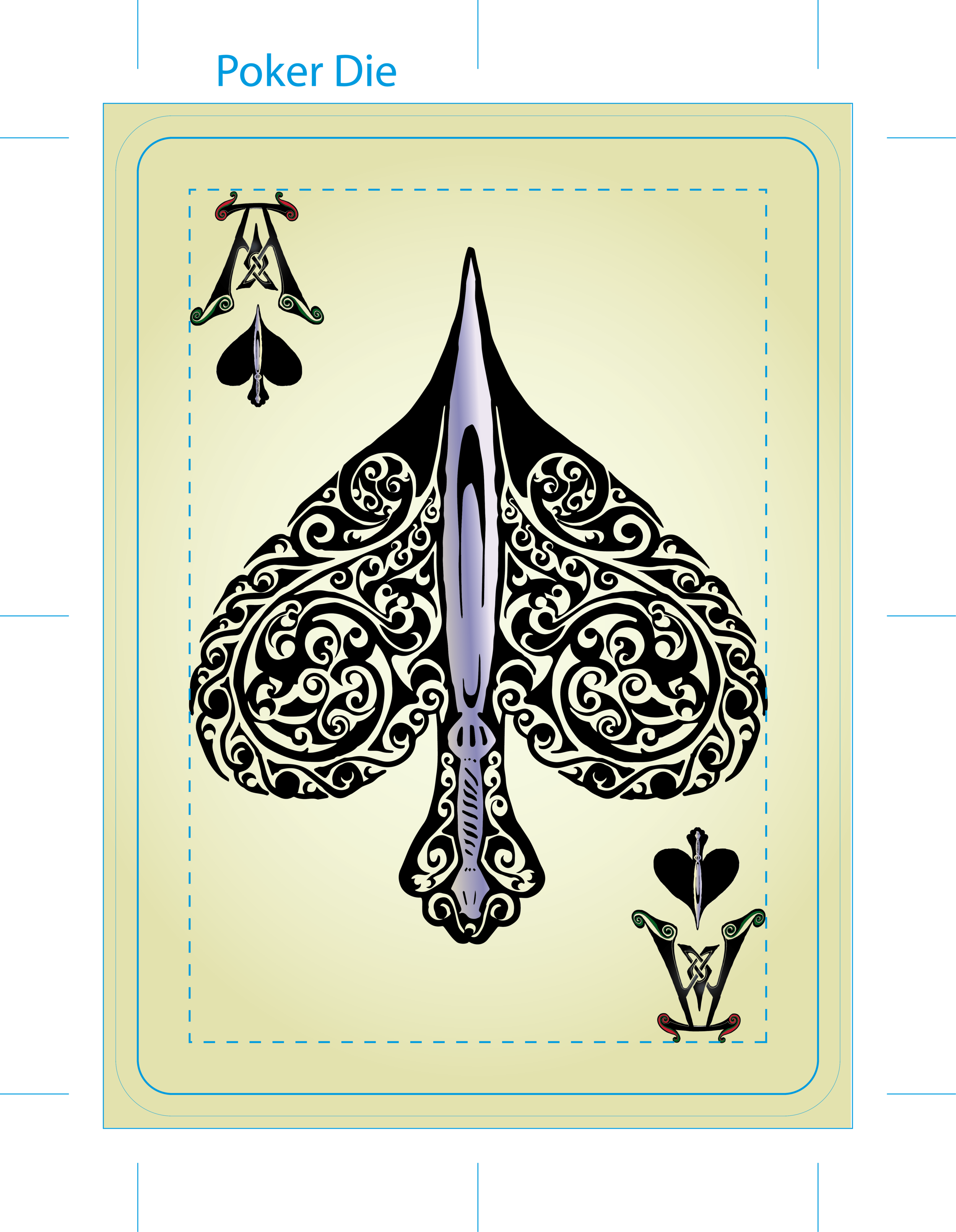Discover the beauty of our hand-drawn, authentic Celtic Myth playing cards.

The Ace of Hearts
There is no more iconic or pervasive symbol of Celtic culture than the cauldron. In Gaelic mythology, the cauldron of the Dagdae was a cauldron of plenty from which no host or company went unsatisfied. It was brought from the city of Muirias, a name most likely derived from the word muir meaning the sea, where the poet-sage Seimias presided. His name seems related to the word seimh, meaning something riveted as cauldrons were riveted and the bronze-smith of the Tuatha Dé Danann, Creidne Ceard, was said to have worked in seimheann, riveted goods. In the wider mythology, the cauldron of plenty was also a cauldron of testing that could give supernatural knowledge, as in the stories of Fionn Mac Cumhaill and Taliesin. It is mentioned in the Welsh poem Peiddeu Annwfyn as the goal of a raid led by King Arthur himself, and an echo of it survives in the cauldron in Llassar Llaes in the Mabinogion, the basis for Lloyd Alexander’s eponymous Black Cauldron.
The Ace of Spades
The suit of spades is based on the Sword of Nuadha, sometimes conflated with the Claidheamh Soluis (Sword of Light). In at least one source it is also referred to as a 'candle' or fire-brand. This sword was brought from the Otherwordly city of Finnias where the poet-sage Uiscias presided. Like Lugh's spear, it was unstoppable in battle and is probably connected somehow with Caledfwlch, the legionary Welsh sword that would eventually become Excalibur, the gift of the Lady of the Lake. Since the name Uiscias seems to be related to 'uisce' (water) there could be a dim parallel with that more familiar sword. There is also a vast array of mythological associations with water as paralleling mantic knowledge, brewed in otherworldly cauldrons and flowing in streams through tradition-bearers.
The Ace of Diamonds
The Lia Fáil or 'Stone of Destiny' as it is sometimes styled, was said to have shouted beneath the true High King of Ireland. The same idea informed the Stone of Scone which was used in the crowning of the Scottish Kings. In Gaelic culture, kingship had an almost priest-like function in that the king was thought to marry the goddess of the land, securing abundance for his people through the fertility of their union. This abundance was understood in highly economic terms, and the basic requirements for being a member of the aristocracy was in being able to maintain a certain amount of wealth manifested in animals, primarily cattle, and dependents. Morfessa, the poet-sage whose name means 'great-knowledge', presided over the city of Falias where it originated, suggesting a connection between knowledge and the recognition of kingship by the learned classes.
The Ace of Clubs
From the city of Goirias, presided over by the poet-sage, Esras, came the spear of Lugh which, like the sword of Nuadha, was irresistible in battle. The spear went further, however, because while the sword would win the combat, the spear would win the battle. It was thus the weapon of a skilled war-leader. Spears and swords together formed the core of the Gaelic warrior’s complement of weapons, his gaisceadh (mod. Ir. gaisce). There is also a suggestion that the spear took more skill to use as Lugh is the master of all skills. This is emphasized by the poetsage’s name, Esras, which seems taken from the word esraiss meaning an outlet, passage, or opportunity.





